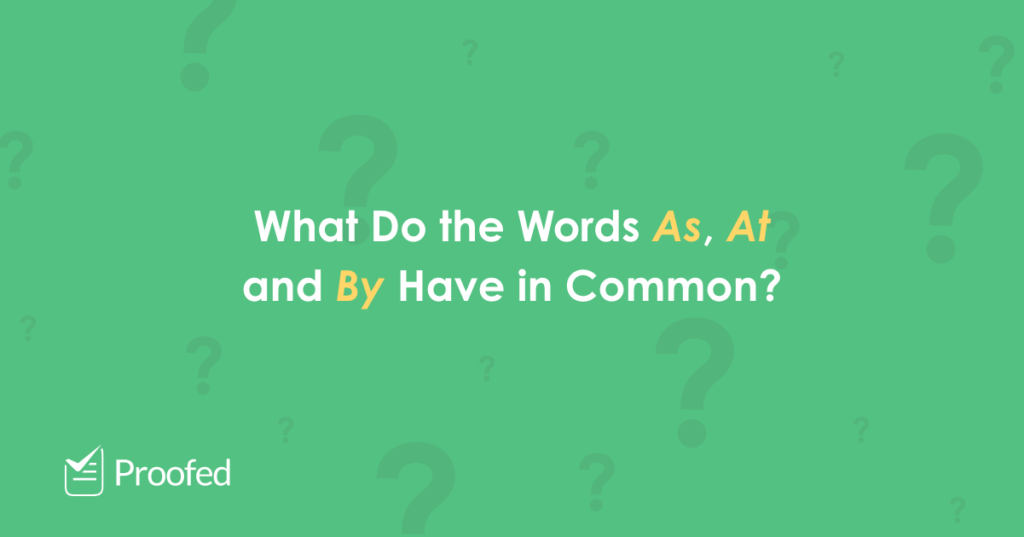Picking the right preposition can be tricky. After all, there are so many to choose from! But prepositions can be vital for building a grammatical sentence.
As such, you’ll need to know how these terms work if you want to avoid errors in your writing. And in this post, we’re taking a closer look at three common prepositions you need to know: ‘as’, ‘at’ and ‘by’.
What Are Prepositions?
Prepositions are linking words. In particular, they show us how a word is related to other words in a sentence. For example:
The man came from Scotland.
‘From’ here is a preposition that tells us the relationship between ‘man’ and ‘Scotland’ (i.e. that ‘Scotland’ is where the man originated). Most prepositions work like this, coming before a noun or pronoun. But how about ‘as’, ‘at’ and ‘by’? What do we use these words for when building a sentence?
As (Function and Character)
The word ‘as’ has several uses. In fact, it isn’t even a preposition most of the time! Usually, it is either an adverb (when making comparisons) or a conjunction (when linking clauses).
However, it can also be a preposition. In this case, you would use it before a noun or noun phrase to express the function or character of something:
Monique works as a proofreader.
Find this useful?
Subscribe to our newsletter and get writing tips from our editors straight to your inbox.
Alan was difficult as a child.
In the first sentence above, for instance, ‘as’ points to the type of work Monique does (i.e. proofreading). In the second, ‘as’ tells us who Alan was when the speaker considered him difficult (i.e. a child).
At (Location, Position and State)
The good news is that ‘at’ is always a preposition, which is simpler than ‘as’. Unfortunately, it also has many uses as a preposition, so it is still tricky! We won’t try to list all its functions here, but key uses include indicating:
- A location (e.g. They will be at the party later)
- When something takes place (e.g. We will get there at 8pm)
- A point on a scale or in a process (e.g. We’re at the halfway point)
- A state or condition (e.g. I’m good at cricket)
- The object of an action or attention (e.g. He keeps staring at the clock)
Most of the time, then, we use ‘at’ to indicate a location, position or state.
By (Responsibility and Means)
Finally, we have ‘by’, which is almost always a preposition. This term has many uses, but some of the most common include indicating:
- Who performed an action (e.g. The goal was scored by Viduka)
- The means by which something was done (e.g. I travelled by bus)
- The size or amount of a difference (e.g. We improved output by 25%)
- A deadline or the end of a time period (e.g. We need it finished by Tuesday)
- That something is next to something (e.g. She found it by the side of the road)
- The time during which something happens (e.g. Most owls hunt by night)
As with ‘at’, the variety of uses here can seem confusing. But if you practise using the prepositions above, you should get the hang of them before long!
